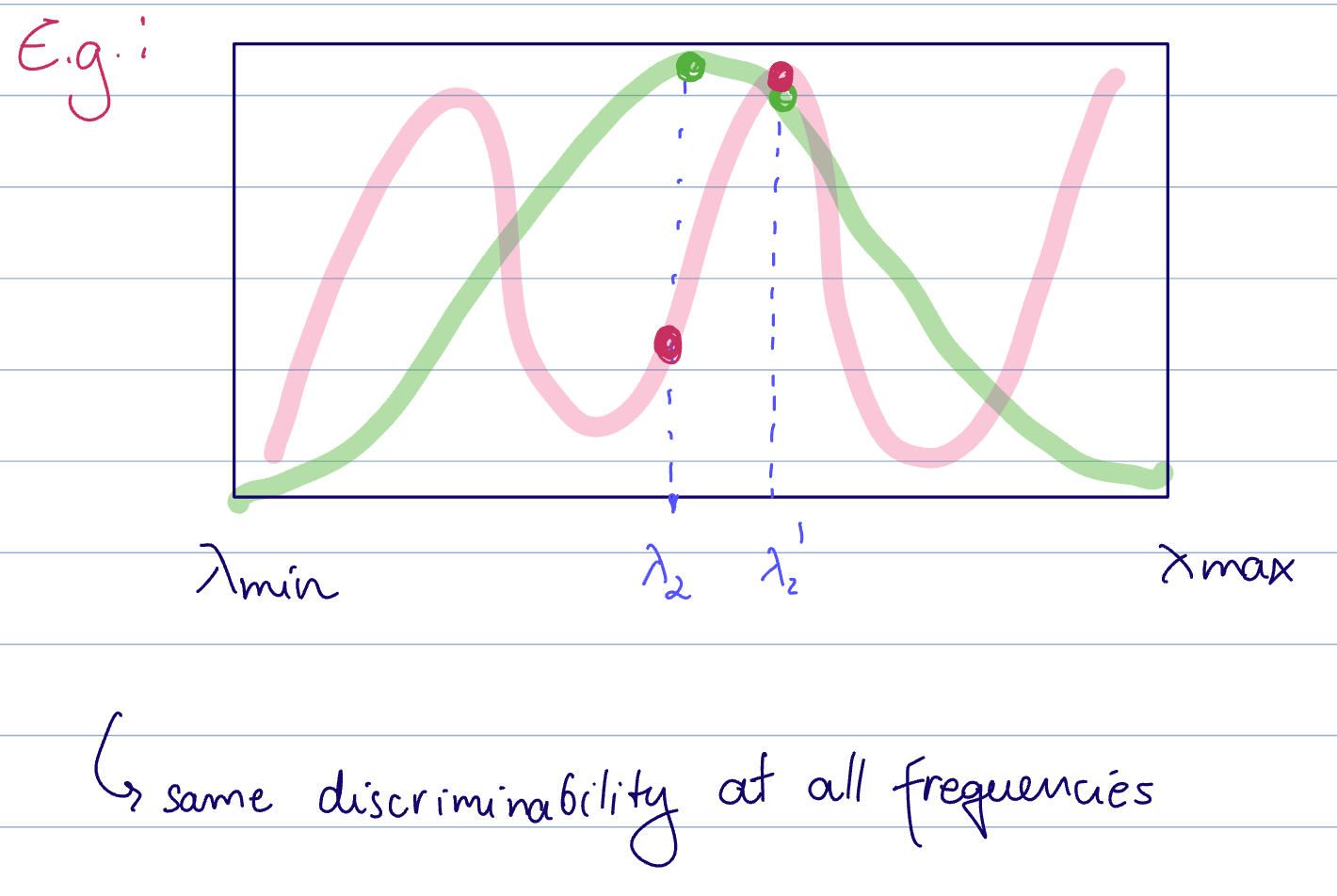stability-discriminability tradeoff for Lipschitz filters
[[concept]]
Stability-Discriminability tradeoff for Lipschitz filters
Discriminability for lipschitz graph filters is the same at all frequencies. This means there is a tradeoff on benefits between having a large vs a small Lipschitz constant.
- with a small
, there is better stability for small perturbations on the eigenvalues - However, if there are large perturbations on the graph, it is good to be more discriminative to notice these changes.
Example Illustration

Here, green has a smaller
- The green filter is stable and gives a response that is very close to at both
and - whereas the pink filter has a larger difference at the two sampled locations, but has better discriminability
Having a larger Lipschitz constant results in better discrimination between the responses, but less stability.